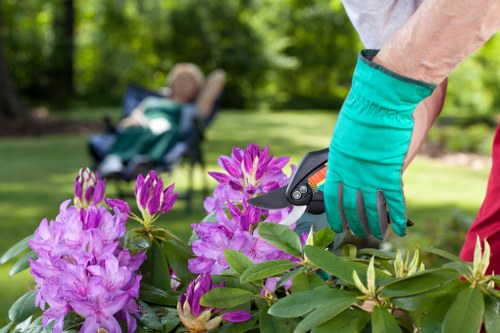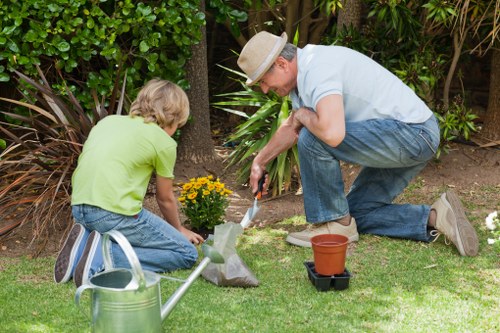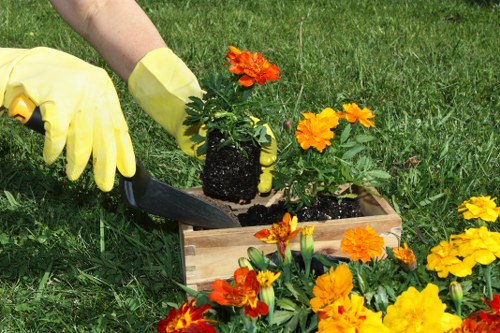Tree Lopping and Removal in Greenwich: Ensuring a Safe and Beautiful Environment
Understanding Tree Lopping and Removal

Tree lopping and removal are essential services for maintaining the health and safety of your property in Greenwich. Whether you have overgrown branches that pose a risk or trees that have become hazardous, professional tree services can help manage and mitigate these issues effectively.
**Tree lopping** involves cutting off specific branches to control the shape and size of a tree, promoting healthy growth and preventing potential damage. On the other hand, **tree removal** is the complete elimination of a tree that is diseased, dead, or dangerously positioned.
Choosing the right service ensures that your trees are maintained properly, enhancing the aesthetic appeal of your surroundings while safeguarding your property from possible threats.
The Importance of Professional Tree Services

Engaging professional tree lopping and removal services in Greenwich offers numerous benefits. **Safety** is paramount, as experts have the necessary skills and equipment to handle trees without causing harm to people or property. Additionally, professionals can accurately assess the health of a tree, recommending whether lopping or removal is the best course of action.
Moreover, professional arborists understand the local climate and soil conditions, ensuring that the tree care provided is tailored to the specific needs of your trees. This expertise not only prolongs the life of your trees but also contributes to a greener and more sustainable environment.
Proper tree maintenance can also increase property value, as well-kept trees are a significant aspect of curb appeal. Investing in professional services ensures long-term benefits for your property and the surrounding ecosystem.
When to Consider Tree Lopping or Removal

Deciding between tree lopping and removal depends on several factors. **Tree lopping** is suitable when branches are overgrown, obstructing views, or interfering with structures like roofs and power lines. It helps in managing the tree's growth, preventing limb breakage, and maintaining its structural integrity.
**Tree removal** becomes necessary when a tree is dead, diseased, or poses a significant safety hazard. Signs that a tree needs removal include extensive decay, leaning significantly, or having multiple broken branches. Additionally, if a tree's root system compromises nearby buildings or underground utilities, removal is often the best solution.
It's important to consult with a professional arborist who can evaluate the condition of your trees and recommend the appropriate action. Timely intervention can prevent minor issues from escalating into major problems.
Benefits of Tree Lopping

Tree lopping offers several advantages beyond mere aesthetic improvements. **Health Promotion**: Removing dead or diseased branches allows the tree to focus its energy on healthy growth, enhancing overall vitality.
**Safety Enhancement**: By eliminating overhanging branches, you reduce the risk of branches falling during storms or high winds, protecting your property and loved ones.
**Improved Light and Airflow**: Properly lopped trees allow more sunlight and air to reach your home and garden, fostering a healthier environment for both plants and inhabitants.
- Prevents structural damage to buildings
- Reduces the risk of electrical outages by keeping branches clear of power lines
- Enhances the tree's natural shape and form
Process of Tree Removal

Tree removal is a complex process that requires careful planning and execution. The first step involves a thorough **assessment** of the tree's condition and its surroundings. Professionals evaluate factors such as the tree's size, location, and stability to determine the safest removal method.
Next, they prepare the site by clearing the area of obstacles and ensuring that all necessary safety measures are in place. This includes setting up barriers and communicating with property owners to address any concerns.
The removal itself is carried out using specialized equipment, such as cranes and chainsaws, to safely cut down the tree in sections. Once the tree is down, the debris is cleared, and the area is restored, leaving your property clean and hazard-free.
- Initial assessment and planning
- Preparation of the site
- Safe removal of the tree
- Cleanup and restoration
Choosing the Right Tree Service Provider in Greenwich
Selecting a reputable tree lopping and removal service in Greenwich is crucial for ensuring quality and safety. Here are some factors to consider:
- Experience and Expertise: Look for providers with a proven track record and certified arborists who understand tree biology and care.
- **Insurance and Licensing:** Ensure that the company is fully insured and licensed to protect against any accidents or damages.
- **Customer Reviews and References:** Check testimonials and ask for references to gauge the company's reliability and customer satisfaction.
- **Range of Services:** A comprehensive service provider can handle all aspects of tree care, from maintenance to emergency removal.
- **Transparent Pricing:** Choose a company that offers clear and competitive pricing without hidden fees.
By carefully evaluating these factors, you can select a service provider that meets your needs and ensures the well-being of your trees and property.
Environmental Considerations
Tree lopping and removal have significant environmental implications. Proper tree care contributes to preserving biodiversity, reducing carbon footprints, and maintaining ecological balance in Greenwich.
When trees are maintained or removed responsibly, it minimizes the impact on local wildlife and the surrounding ecosystem. Professionals prioritize sustainable practices, such as recycling green waste and planting replacement trees to offset removals.
Moreover, healthy trees play a vital role in air purification, providing shade, and preventing soil erosion. By investing in professional tree services, you're contributing to a healthier and more sustainable environment for future generations.
Cost Factors in Tree Lopping and Removal
The cost of tree lopping and removal in Greenwich varies based on several factors. **Tree Size and Height:** Larger trees require more labor and specialized equipment, increasing the overall cost.
**Accessibility:** Trees that are hard to reach or located near structures may necessitate additional precautions and time, affecting the price.
**Health and Condition of the Tree:** Diseased or damaged trees might require more extensive removal processes, influencing the cost.
- Type of service: lopping vs. removal
- Distance from the service provider's location
- Seasonal demand and scheduling
- Permits and regulatory compliance
Obtaining multiple quotes and understanding the breakdown of costs can help you make an informed decision that aligns with your budget and requirements.
Safety Measures in Tree Services
Safety is paramount in tree lopping and removal operations. Professional services adhere to strict safety protocols to protect both workers and clients. **Proper Training and Equipment:** Certified arborists undergo training to handle trees safely and use appropriate equipment, such as harnesses, ropes, and cutting tools.
**Risk Assessment:** Before commencing work, professionals assess potential hazards, including unstable branches, nearby structures, and environmental conditions like wind speed.
**Emergency Preparedness:** Reputable companies have plans in place to address unforeseen incidents, ensuring swift and effective responses to emergencies.
- Use of personal protective equipment (PPE)
- Regular safety drills and training
- Compliance with occupational safety regulations
Adhering to these safety measures ensures that tree services are conducted without accidents, providing peace of mind to clients.
Post-Removal Services
After tree lopping or removal, additional services may be necessary to restore your property. **Stump Grinding:** Removing the remaining stump prevents regrowth and eliminates tripping hazards, enhancing the landscape's appearance.
**Clean-Up and Debris Removal:** Professionals efficiently clear away branches, leaves, and other debris, ensuring that your property is left tidy and safe.
**Landscaping:** Post-removal, you might consider landscaping services to fill the void left by the tree, promoting new growth and maintaining the aesthetic balance of your garden.
- Stump removal
- Debris disposal
- Soil restoration
These post-removal services contribute to a seamless and hassle-free experience, allowing you to enjoy your property without lingering inconveniences.
Legal and Regulatory Aspects
Tree lopping and removal in Greenwich are subject to certain legal and regulatory guidelines. **Permits and Approvals:** Depending on the tree's size, species, and location, you may need to obtain permits from local authorities before proceeding with removal.
**Protected Species:** Some trees are protected due to their ecological significance. It's essential to identify whether your tree falls under protection laws to avoid legal repercussions.
**Neighbor Considerations:** Removing a tree near property lines may require consultations or agreements with neighbors, ensuring that collective interests are respected.
- Research local tree removal ordinances
- Apply for necessary permits
- Consult with arborists on protected species
Staying informed and compliant with these regulations ensures that your tree services are conducted legally and responsibly.
Seasonal Considerations for Tree Care
Timing plays a crucial role in the effectiveness of tree lopping and removal. Certain seasons are more conducive to tree maintenance, enhancing the health and longevity of your trees.
**Winter:** Dormant seasons like winter are ideal for tree removal and major pruning, as trees are less susceptible to stress and disease. The absence of leaves makes it easier to assess the tree's structure.
**Spring and Summer:** These seasons are suitable for regular maintenance and minor pruning, promoting healthy growth during active periods. However, major removals are best avoided to prevent undue stress on the tree.
- Optimal timing for different services
- Avoiding adverse weather conditions
- Maximizing tree health and recovery
Aligning your tree care activities with seasonal conditions ensures more effective results and healthier trees.
Sustainable Practices in Tree Lopping and Removal
Embracing sustainable practices in tree services is essential for environmental conservation. **Recycling Green Waste:** Professionals often recycle branches and foliage into mulch or compost, reducing landfill waste and enriching soil quality.
**Planting Replacement Trees:** To offset removals, planting new trees ensures that carbon sequestration and ecological benefits are maintained. It's a commitment to sustaining the environment while addressing immediate tree care needs.
**Eco-Friendly Equipment:** Utilizing energy-efficient and low-emission machinery minimizes the environmental impact of tree services, contributing to cleaner air and reduced carbon footprints.
- Recycling and repurposing tree materials
- Commitment to reforestation
- Use of sustainable tools and machinery
Adopting these practices reflects a dedication to preserving nature while responsibly managing tree care tasks.
Innovations in Tree Service Technology
The tree service industry has seen significant advancements in technology, enhancing the efficiency and safety of tree lopping and removal. **Drones and Aerial Imaging:** These tools allow arborists to assess trees from different angles, identifying potential issues without the need for extensive manual inspections.
**Advanced Cutting Equipment:** Modern chainsaws and hydraulic cutters enable precise and quicker cutting, reducing the time required for tree maintenance and minimizing stress on the tree.
**Safety Gear Enhancements:** Innovations in protective equipment ensure that arborists can perform their tasks with greater safety, using lightweight and durable materials that offer better protection.
- Use of drones for assessments
- Efficient and precise cutting tools
- Enhanced personal protective equipment
These technological improvements contribute to more effective and safer tree care services, benefiting both professionals and clients.
Maintaining Your Trees After Lopping or Removal
Proper maintenance post-lopping or removal ensures the continued health and beauty of your landscape. **Regular Inspections:** Periodic checks by a professional can identify early signs of disease or stress, allowing for prompt intervention.
**Proper Watering and Fertilization:** Ensuring that trees receive adequate water and nutrients supports their recovery and growth, especially after significant pruning or removal activities.
**Pest Control:** Monitoring for pests and diseases helps in maintaining the overall health of your trees, preventing infestations that could cause further damage.
- Scheduled tree health assessments
- Appropriate watering schedules
- Integrated pest management strategies
Consistent maintenance practices contribute to the longevity and vitality of your trees, ensuring that they remain an asset to your property for years to come.
Conclusion: Investing in Tree Health and Safety
Tree lopping and removal are vital services for maintaining a safe, healthy, and aesthetically pleasing environment in Greenwich. By entrusting your tree care needs to professional arborists, you ensure that your trees are managed with expertise and care.
Whether it's enhancing the growth of your existing trees through lopping or safely removing a hazardous tree, professional services provide comprehensive solutions tailored to your specific circumstances. Investing in these services not only protects your property but also contributes to the broader environmental well-being of the community.
Don't wait until a minor tree issue becomes a major problem. **Contact us today** to schedule your tree lopping or removal service and take the first step towards a safer and more beautiful property.